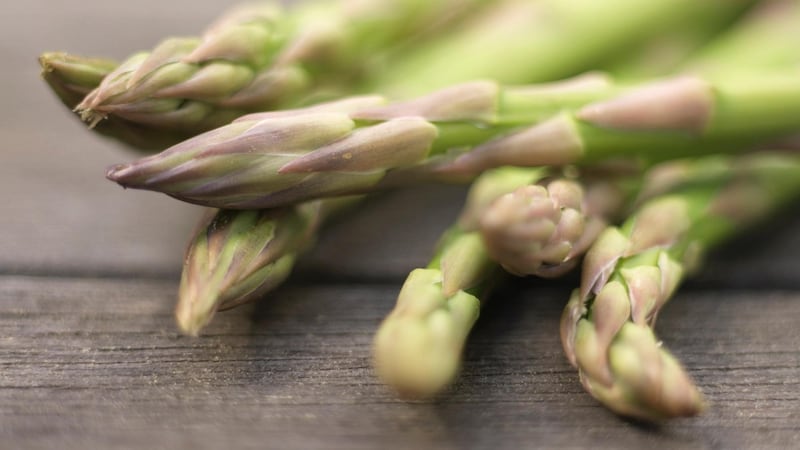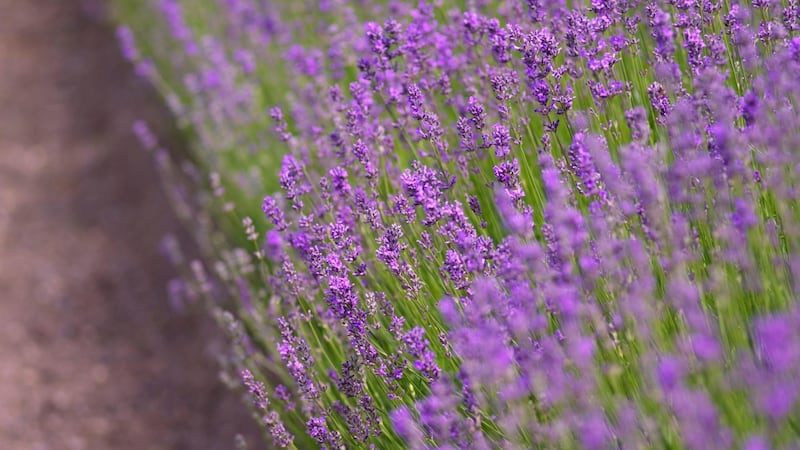What a month of blisteringly cold blizzards, icy gales and floods it’s been, with the result the soil in many Irish gardens is cold and wet, plants have suffered frost-damage, and growth levels are weeks behind where they should be. But don’t panic. As a wise person once said, if there’s one thing that gardening teaches, it’s the art of cultivating patience. Meanwhile, history shows nature has a habit of levelling things out over the growing season, especially if we exercise good judgment and a little common sense.
So while this week’s column is packed full of ideas to get your garden going this spring, I’m not, for example, suggesting you plant potatoes in a snowstorm, even if it is early April. Waiting for just a few dry, warmish days will make all the difference to the soil conditions, while you can always use the intervening time to start ‘chitting’ or pre-sprouting the seed potatoes. Alternatively, use it to sow some seeds under cover. Or to pot up some lily bulbs. Or some dahlia tubers (see below). Because one way or another, spring is on its way . . .
1. Plant some sweet pea
If you sowed sweet pea either last autumn/winter or earlier this year, you should have young, strong plants ready to be planted out in the garden this month. April might seem strangely early for such a job but these hardy annuals need plenty of time and a cool, moist, rich soil to establish a strong root system if they’re to perform at their best come summertime. As long as they’re well hardened-off before transplanting, sweet pea plants are also surprisingly tolerant of spring frosts and will survive temperatures as low as -5ºC (even lower if they’re covered in a blanket of snow). In the unlikely case that temperatures plunge below this, they can be easily protected with a layer of horticultural fleece. Planted this month, you’ll be picking their intensely perfumed, pretty flowers by early summer.
2. Sow some flowering annuals
Early April is the perfect month to sow seed of lots of different kinds of hardy and half-hardy annuals under cover for pricking out into modules/cell trays and then transplanting into the garden in late spring/early summer so the plants go on to give you many months of colourful blooms. All you need is a few packets of seed, a bag or two of good-quality seed compost, a few plastic pots and a warm, bright spot. Choose easy-to-grow, long-flowering kinds such as cosmos, marigolds, annual rudbeckia, amaranthus and ammi, all of which are also excellent as cut flowers. Seed is widely available from good garden centres as well as from specialist online suppliers such as seedaholic.com and chilternseeds.co.uk.
3. Sow some vegetable seeds
The same goes for many kinds of vegetable seeds, which can be sown under cover and grown on in modules/cellular trays for transplanting out later in the spring. Examples include beetroot, winter leeks, cabbage, cauliflower, chard, scallions, Brussels sprouts, courgettes, pumpkin, squash, French beans, runner beans and sweet-corn. Recommended Irish specialist seed suppliers include Brown Envelope Seeds (brownenvelopeseeds.com), Green Vegetable Seeds (greenvegetableseeds.com) and Irish Seed Savers (irishseedsavers.ie).
4. Grow some spuds
Unless your garden is a warm and sheltered one, March's awful weather made it impossible to plant seed potatoes outdoors, but there's still plenty of time to get the seed tubers in the ground. As always, wait for a dry day and until soil conditions are favourable (so not sodden or frozen). Potatoes are greedy feeders that like a really fertile, moisture-retentive but free-draining soil in full sun so prepare the ground well before planting. You'll find an excellent selection of seed tubers of both 'earlies' and maincrop varieties, including some with good resistance to blight, in most good garden centres at this time of year, while specialist online suppliers include fruithillfarm.com and quickcrop.ie.
5. Dahlia time
Dahlias are one of the great joys of the Irish flower garden from summer until the first hard frosts, with the plants pumping out their large, edible and brilliantly colourful blooms for months on end. There’s a vast range of species/cultivars/ varieties to choose from with flowers in almost every shade imaginable, some of which (for example, ‘Roxy’) are compact enough for a pot. To get them going as early as possible, pot the fleshy tubers up in three-litre plastic pots filled with a good-quality compost and keep them in a bright, frost-free porch/conservatory/glasshouse or polytunnel to plant out in late May/early June once all risk of frost has passed. The tubers are widely available at this time of year from good Irish garden centres and specialist nurseries. Alternatively, you can easily grow them from seed (see seedaholic.com and avonbulbs.co.uk). As for their preferred growing conditions, these are exactly the same as for potatoes, their tuberous, South American cousins. Just make sure to take careful precautions against slugs.
6. Plant a rose
Hardy, long-lived, versatile and with beautiful, edible, scented flowers, it’s no wonder roses are making a comeback. Technically, you can plant container-grown roses at any time of the year as long as the ground isn’t bone dry, frozen hard or dripping wet but April is traditionally a good month to do so. Just make sure to give the plants a fertile, well-drained soil enriched with well-rotted manure or garden compost, a sprinkle of slow-release fertiliser, and a position in full sun or light shade, and to pick a suitable variety. From giant ramblers such as Rosa ‘Wedding Day’ that can scramble up a mature tree or clamber up the side of a two-storey building to compact patio varieties that are happy to grow in a pot, there’s a rose for every Irish garden. Most good garden centres carry an excellent selection at this time of year.
7. Plant a tree lily
Imagine what a lily would look like if it was growing in Gulliver's land of giants and you'll have some idea of the size of these huge plants, which can grow up to 2.5m tall and produce up to 40 large, deeply scented, trumpet-shaped blooms. Despite their size, tree lilies will grow happily in a large, deep pot filled with a John Innes soil-based compost enriched with a little well-rotted manure and a sprinkle of slow-release fertiliser, making them perfect for a container garden as long as you can give them plenty of vertical space. Technically, their fleshy bulbs should be in the ground by the end of March, but early April is fine, especially given the recent Siberian weather. Plant the large bulbs to a depth equivalent to three times their height and 15cm apart (three to a large pot is about right), give them a lightly shaded, sheltered spot and keep them well-watered and protected from slugs. As they grow taller, tree lilies also need some form of support, so either stake them or gently tie their thick fleshy flower stems to a nearby wall/trellis. Tree lily bulbs are available from good garden centres, see mrmiddleton.com.

8. Grow your own asparagus
A gardening friend of mine has her very own asparagus bed (planted many years ago) and every spring I watch with envy as the thick, juicy spears push their way through the earth. True, you need to give these very long-lived, hardy perennial plants a prime spot in the garden or allotment (full sun and a really rich, well-drained, weed-free soil) as well as plenty of time (it will be a couple of years before you’ll get your first harvest) but the reward is decades of deliciousness. April is the perfect time to plant asparagus as bare-root crowns, which should be spread out onto 10cm-high ridges of soil and then covered so that just the tips are visible. Recommended varieties include the strong-growing, purple-tipped ‘Connover’s Colossal’, the heavy-cropping ‘Guelph Millenium’ and the early, especially flavoursome ‘Mondeo’.

9. Plant a lavender hedge
With its aromatic, silver-grey, evergreen foliage and scented, edible purple flower spikes (use them sparingly in homemade ice-cream and cakes to add a pop of floral flavour), lavender is one of those great all-rounders in the garden. April is the perfect month to plant this low-maintenance shrub. Just make sure to give it a very free-draining, not overly rich soil and a position in full sun. Bear in mind that not all lavenders are created equal when it comes to coping with our cool, damp climate, so avoid what's known as French lavender (Lavandula stoechas) and instead focus on varieties of English lavender (Lavandula angustifolia). Examples of the latter include the classic Lavandula 'Hidcote', a compact variety (height and spread of 60-75cm) with violet-purple flowers, and the even more compact L 'Imperial Gem' (deep purple flowers, 60cm x 45cm).
Dates For Your Diary:
Thursday, April 5th (8pm), The Artane Beaumont Family Recreation Centre, Kilmore Road, Artane, Dublin 5, 'Herbaceous Perennials', a talk by John Eivers of Meath-based Riverlane Nurseries Plants on behalf of Dublin 5 Horticultural Society.
Saturday April 7th (2pm), Chanel College, Coolock Village, Dublin 5, The Dublin 5 Spring Show.
Thursday April 12th (3pm), Visitor Centre, National Botanic Gardens, Glasnevin, Dublin 9, 'Lesser-Known Orchids Revealed', an afternoon lecture by the garden's glasshouse foreman, orchid expert and author Brendan Sayers, see botanicgardens.ie.












